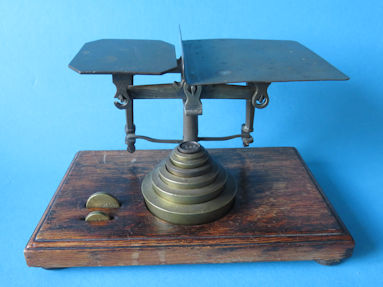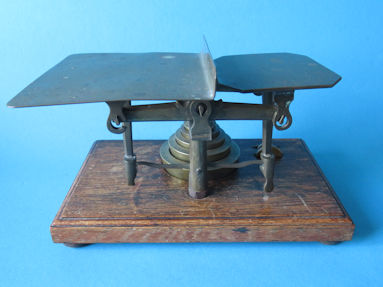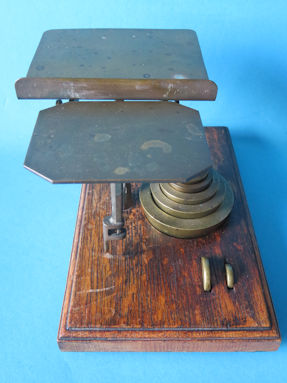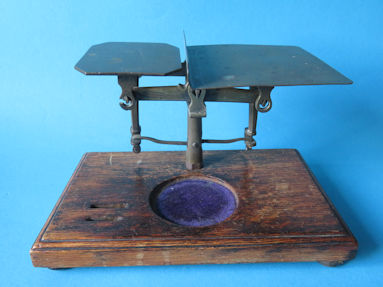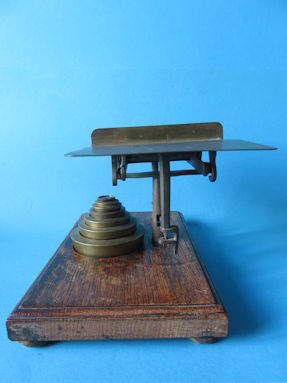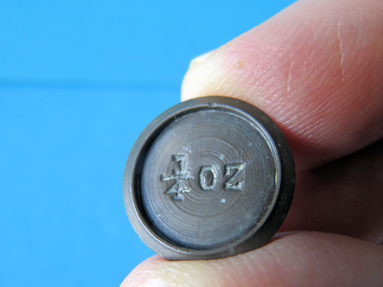the substance used is unclear. The wooden base stands on four wooden doughnut-shaped feet. There is a round recess in the front center of the base for a stack of weights. The weights of 1Lb (= 1 pound = 16 ounces), 8 oz (ounces), 4 oz, 1 oz, and ½ oz seem to belong originally to this balance. They are marked with a lion facing left, this mark was applied by the Assay Office of the Goldsmith Hall. [EQM pp 45 and EQM pp 499-500]. The weights of 2 oz and ¼ oz are probably replacement copies to complete the weight set again. Very special are the two weights of ⅓ oz and ⅔ oz. These weights are stored on their sides in the two slots on the left. These two weights are not marked with a lion looking to the left. These weights were used to weigh letters to France (and also Algeria, Turkey, Smyrna and Dardanelles) in the very short period from 1869 to 1875. The establishment of the Universal Postal Union in 1874 put an end to the use of these separate letter post weight limits [EQM pp 353-354].
The 1978 summer issue of Equilibrium, has on pp 36-37 the article The Scale in Question by D.F. Crawforth. In that article this scale, without the weights, is drawn and described. The copy shown here on this web page, provides clear answers to a few questions posed in the article. The central recess is for a 1 Lb weight, and the two slots are intended to store the special weights of ⅓ oz and ⅔ oz. Below are many more images of these rare English letters & parcel scale from the short period 1869 - 1875.
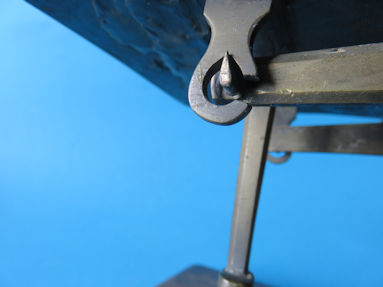
the brass bearing at the rear right has been sawn open
|
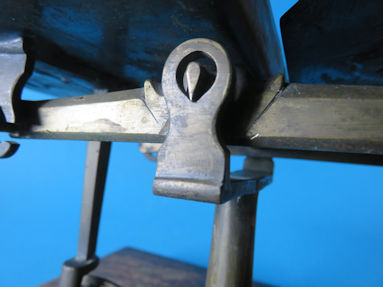
the main pivot point is clearly worn
|
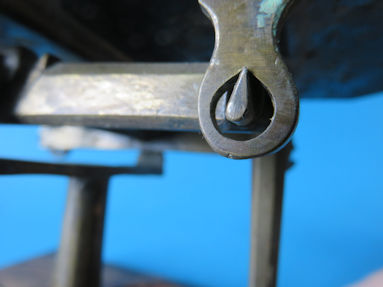
the bearing at the rear left is also worn
|
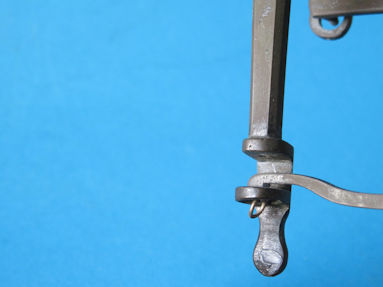
a small ring holds the bottom lever in place
|
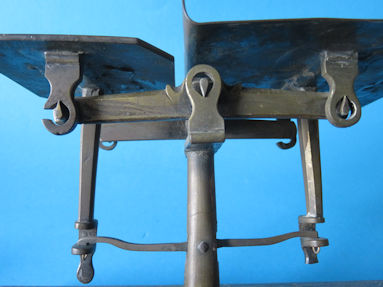
at the front left the brass bearing has also been sawn open
|
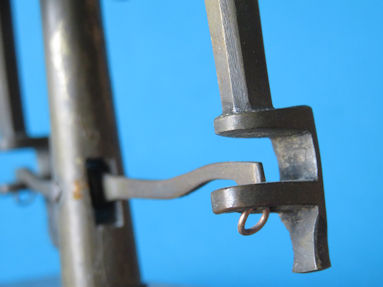
the retaining rings appear to be replacements
|
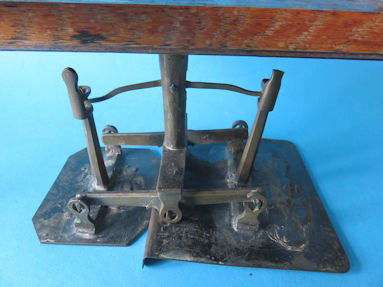
the bottoms of the plateaus have a strange black layer
|
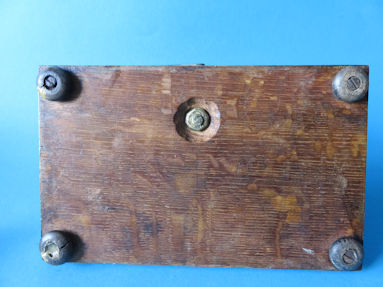
the bottom with 4 donut-shaped feet and the chiseled recess
for the mounting nut of the central upright
|
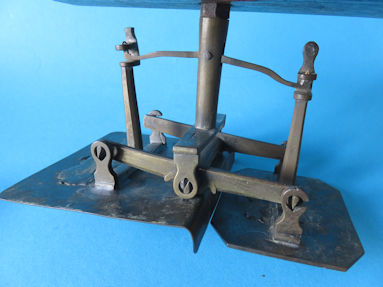
the scale parts are large and sturdy
|
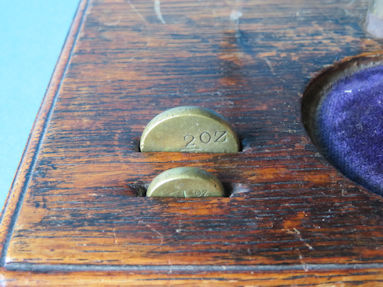
both special weights stored in their slot
|
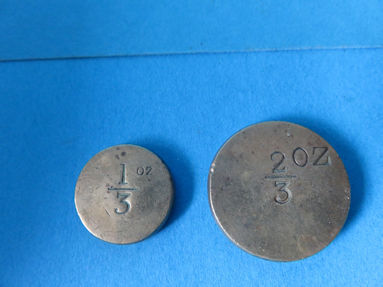
the special flat weights of ⅓ oz and ⅔ oz
|
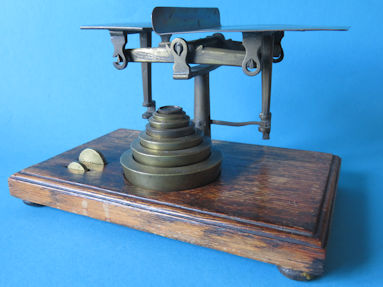
the balance complete with the weights
|
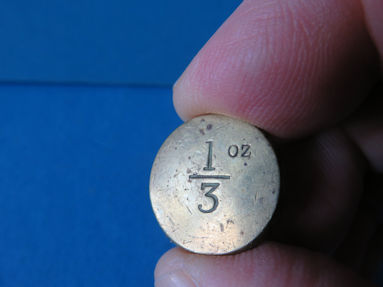
the ⅓ oz weight
|
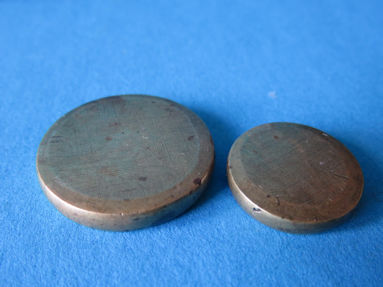
the smooth backs have a beveled edge
|
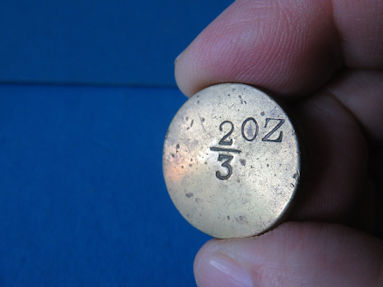
the ⅔ oz weight
|
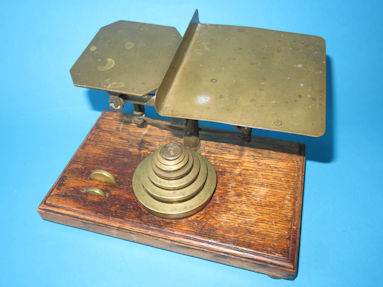
the wooden base is partly weathered
|
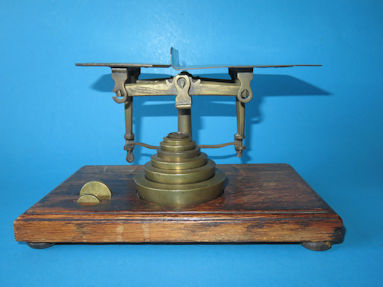
the scale with all weights in place
|
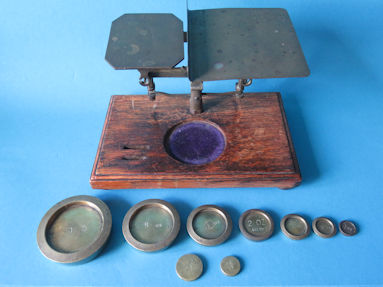
all weights laid out in front of the scale
|
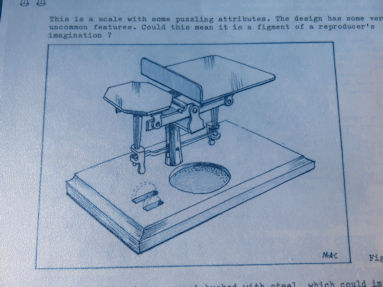
the drawing from the article in Equilibrium of summer 1978
|
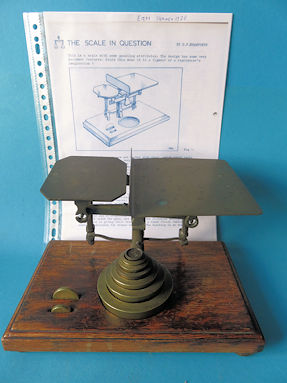
the scale with the article in the background
|
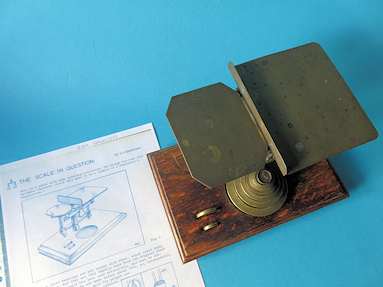
the scale in question in the picture
|
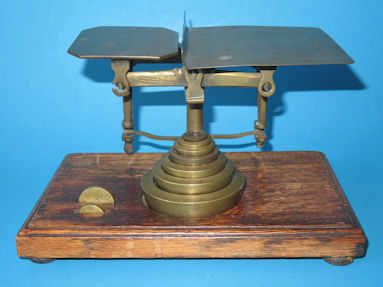
front of the balance balans
|
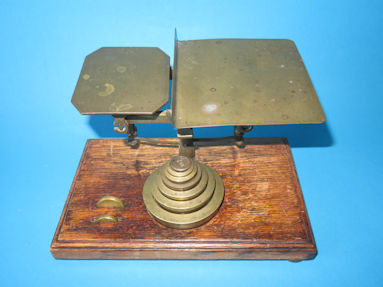
the wooden base has become somewhat weathered
|
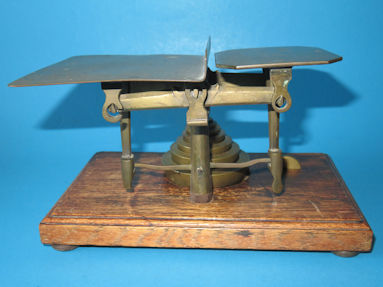
back of the balance
|
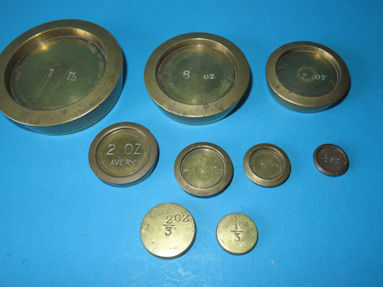
the topsides of the nine weights
|
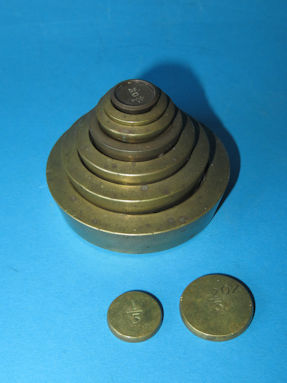
the nested weights and the two special weights
|
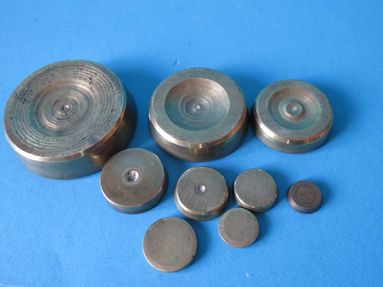
the bottoms of the nine weights
|
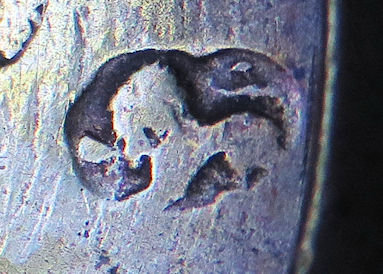
a lion looking to the left, this mark is from the Assay Office
of the Goldsmith Hall in London
|
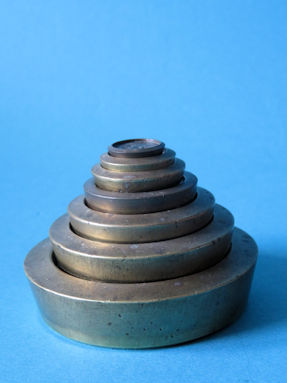
the stacked weights
|
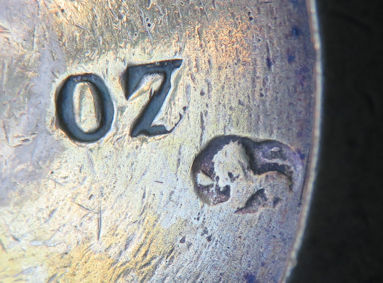
a lion looking to the left, this mark is from the Assay Office
of the Goldsmith Hall in London
|
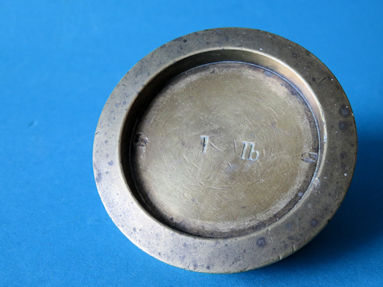
the 1 Lb weight with two lion marks
|
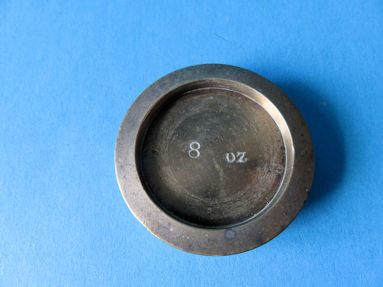
the weight of 8 ounces with two lion marks
|
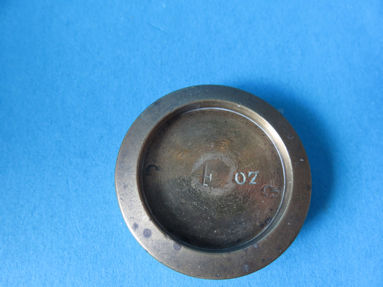
the weight of 4 ounces with two lion marks
|
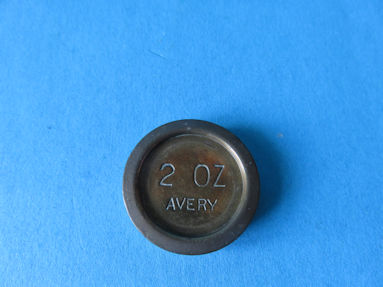
the Avery weight of 2 ounces is a replacement
|
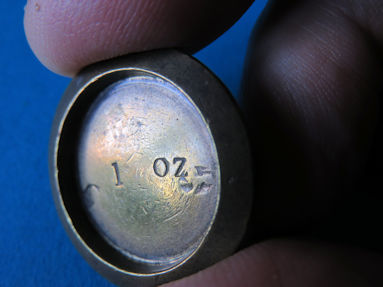
the weight of 1 ounce with two lion marks
|
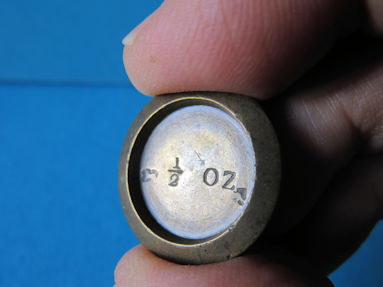
the weight of ½ ounce also has two lion marks
|
